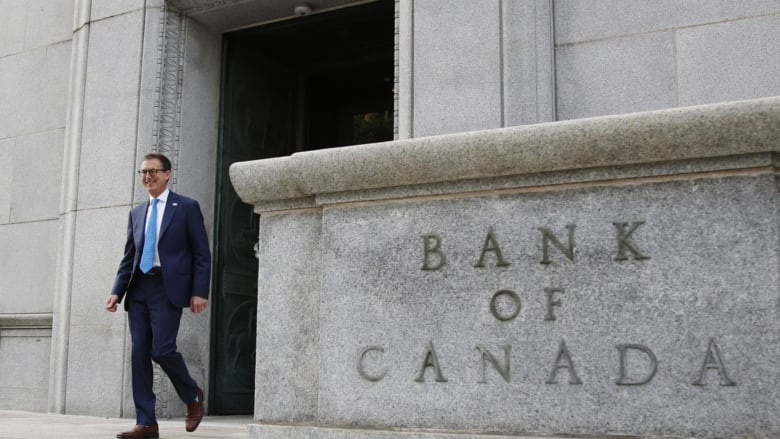
By Jack, Sep 14, 2023, 09:58 PM
Jim Stanford, an economist and director of the Centre for Future Work, and David Naylor, a physician, clinical epidemiologist, and former president of the University of Toronto, draw a compelling analogy between historical medical practices and the current economic approach to Canadian inflation.
In the 19th century, doctors resorted to bleeding their patients, believing it would cure various illnesses by purging impure blood. Shockingly, they attributed adverse reactions to the disease itself, not their misguided treatments, resulting in countless iatrogenic deaths.
This analogy is painfully fitting for Canada’s inflation situation. The Bank of Canada has raised interest rates ten times in just 18 months, aiming to remedy what it sees as the cause of the economic ailment: excessive spending by ordinary households. However, the patient, Canada’s economy, is in distress, evident in a shrinking gross domestic product over two of the past three quarters, rising unemployment, and substantial loan-loss provisions set aside by major banks for anticipated defaults. To make matters worse, the most damning symptom of this misguided treatment is that higher interest rates are ironically fueling more inflation rather than quelling it.
✓ European Central Bank Raises Interest Rates to Historic High, Suggests Potential Peak
✓ Bitcoin Unveiled: 10 Must-Know FAQs for Curious Global Citizens
✓ Court Grants FTX Permission to Liquidate Cryptocurrency Holdings
The most significant contributor to the Consumer Price Index (CPI) is the cost of shelter, comprising 28% of the index. Mortgage interest charges substantially contribute to these housing costs, and they have surged due to the central bank’s actions, rising by an unprecedented 30.6% in the past year, thereby adding nearly a full percentage point to inflation.
Excluding mortgage debt charges, Statistics Canada reports that inflation would stand at 2.4%, well within the bank’s target range of 2% plus or minus one percentage point. Monetary hawks might argue that the rate hikes are responsible for lowering inflation, excluding mortgage costs. Yet, higher housing expenses not only disproportionately influence the CPI but also offset any consumer savings resulting from price reductions attributed to central bank policies.
Thus, it is undeniable that, for now, higher interest rates are contributing to inflation. As inflation falls further, this perverse impact becomes proportionately more significant, emphasizing the need for caution in pursuing further rate hikes.
However, like 19th-century doctors, the Bank of Canada officials attempt to downplay the side effects of their treatment. Governor Tiff Macklem recently argued for excluding mortgage debt charges from estimates of core inflation due to their rapid increase. While this argument has some merit, Macklem’s proposed solution—a synthetic CPI-trim measure that excludes items with significant price fluctuations—still suggests inflation is a concern, potentially warranting more rate hikes. This approach offers little comfort to mortgage holders, who cannot simply disregard debt charges when assessing their actual cost of living.
Furthermore, the adverse effects of high interest rates on housing costs extend beyond the direct impact of mortgage charges. Rents are also soaring, driven in part by Canadians who, unable to afford buying homes, are turning to the rental market. Most worrisome of all, new housing construction in Canada is collapsing, with residential investment plummeting by 21% since the central bank initiated its tightening measures. Given the existing housing shortage and Canada’s growing population, which has increased by 1.2 million in the past year, this reduction in housing supply undoubtedly implies even more rapid inflation in the housing sector in the future.
Rather than expressing concern over these issues, Macklem highlights weak construction as a positive sign that higher interest rates are curbing spending and balancing demand and supply. He also acknowledges that the recent drop in the inflation rate, falling from 8.1% in June 2022, is primarily due to decreasing energy prices and improved global supply chains, factors not sensitive to interest-rate adjustments.
What accounts for this apparent obstinacy? Studies on clinical decision-making emphasize the “chagrin factor”: the fear doctors have that failure to act decisively will lead to deep regret in the event of adverse outcomes. It is difficult not to detect a similar “chagrin factor” in the central bank’s deliberations—initial regret at not responding more promptly to late-pandemic inflation followed by fear that a failure to act resolutely now will result in persistent inflation.
However, besides technical expertise, the ability to discern when not to intervene is a hallmark of the best clinicians. Sometimes, the passage of time is the most effective remedy. One can only hope that, as the Bank of Canada charts its course in the coming months, a more nuanced consideration of risk-benefit ratios and a degree of restraint will prevail.










